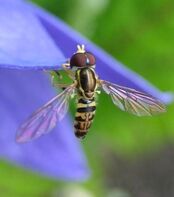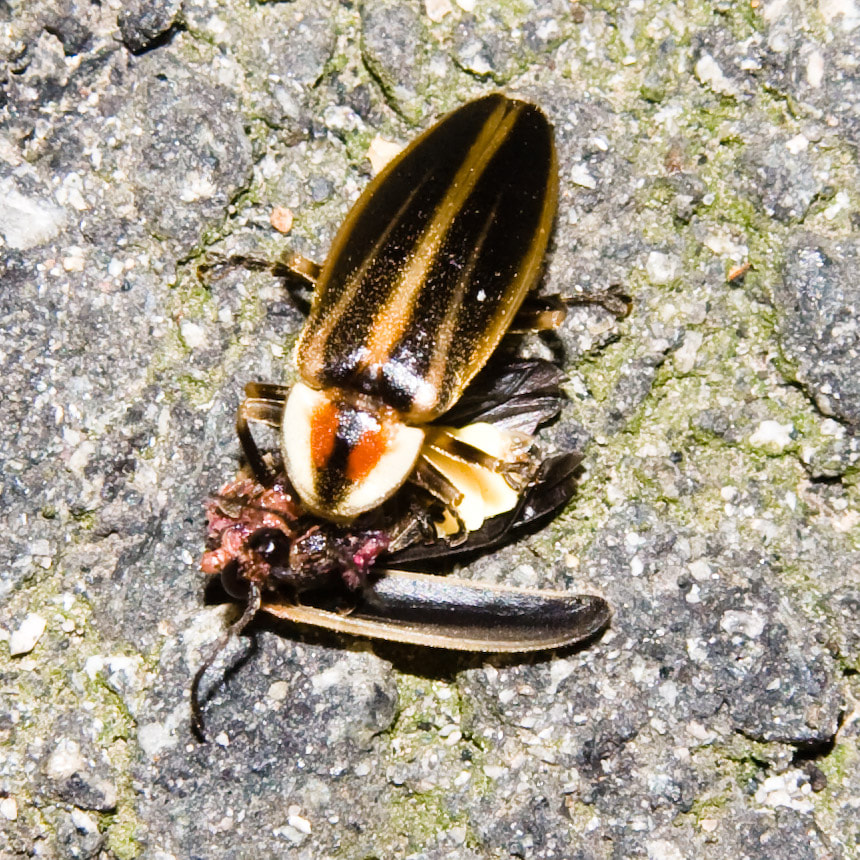|
There are many ways that animals have evolved over time contributing to their successfulness as a species. Many of these useful adaptations are related to making animals less noticeable either from predators, if they are to avoid being eaten, or from prey if they are trying to be successful hunters. When thinking about characteristics that keep animals from standing out, we tend to only think of camouflage, but there are a lot of other really awesome methods of animal deception within the natural world. One of which is in the form of mimicry! Mimicry is an adaptation that we can see in all branches of the animal kingdom. It shows up in birds, mammals, reptiles, amphibians, fish and invertebrates! Mimicry itself is a very broad trait and some forms of camouflage definitely fall within the umbrella description. In basic terms, mimicry is when an organism closely resembles another organism, or, in the case of camouflage, it can be when an animal closely resembles something like a rock. Below are two exceptional examples of insect mimicry within the animal world from imitating harmful animals to avoid predation to aggressive mimicry for luring in prey! Can you think of any animals you know of that might be mimicking another species? To Bee or Not to Bee
Although it doesn't happen too often, a sting from a bee or a wasp is something a human doesn't forget. Well, the same goes for animals! The stinger is an extremely effective defense mechanism for both bees and wasps all around the world. Especially when interacting with smaller predators such as birds. These negative interactions make predators more keen to avoid the stinging insects if they've ever had a bad experience with one. One group of insects that benefits from the bee's reputation in the animal world is the fly! Many flies have evolved coloration similar to that of bees and wasps (distinct black and yellow stripes) because they are less likely to be eaten by predators who target small insects! There are some characteristics that distinguish the two groups of insects, one of which being that bees have two pairs of wings and flies only have one pair, but without being able to make thorough observations, predators will avoid anything that resembles the stinging bee. This type of mimicry is known as Batesian mimicry and is described as when a harmless species mimics a harmful species to avoid predation or negative interactions with other animals. Named for British Naturalist, Henry Walter Bates, who studied mimicry extensively on Amazonian butterflies. A Flashy Disguise
Not all animals will mimic for protection from predators, some critters will mimic other species so that they can prey on them! This often happens with beetles and spiders mimicking the appearance and even the chemical pheromones of ants to infiltrate their colonies, but one of the flashier examples of this mimicry can be seen in fireflies! Although firefly flashes may look random to humans, they are actually very precise signals for communication between males and females. Female fireflies will usually stay in one spot while male fireflies fly around and both will display specific light sequences to attract the other. Almost unbelievably, firefly light sequences change from species to species and males of one species know exactly what their female light signals are and vice-versa. Fireflies do not respond to the light sequences of fireflies of different species. Unless, of course, they are being tricked!
This form of mimicry used to trick other species into harmful situations, such as easily becoming an item of prey, is known as aggressive mimicry.
0 Comments
Leave a Reply. |
AuthorNRT's dedicated staff are responsible for the content of the NatureTalk blog. Questions? For more information on any blog post, please contact us at any time. Archives
December 2021
Categories
All
|






 RSS Feed
RSS Feed
